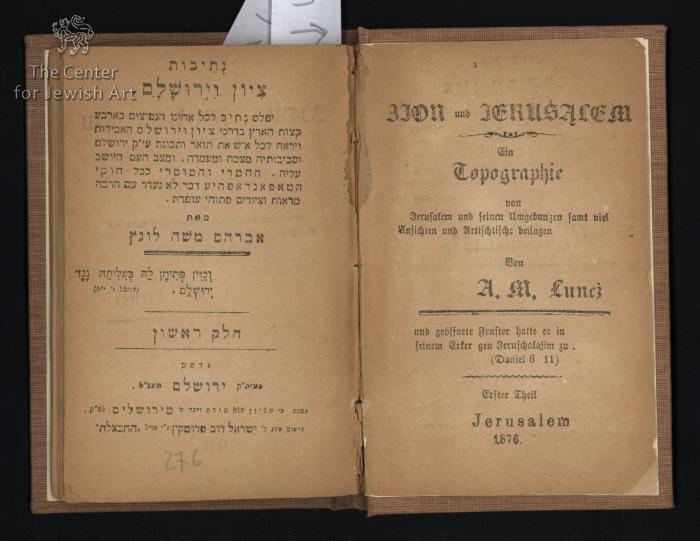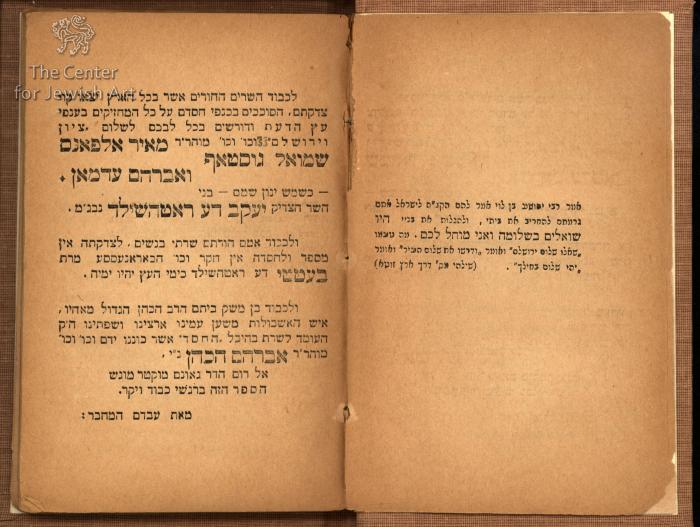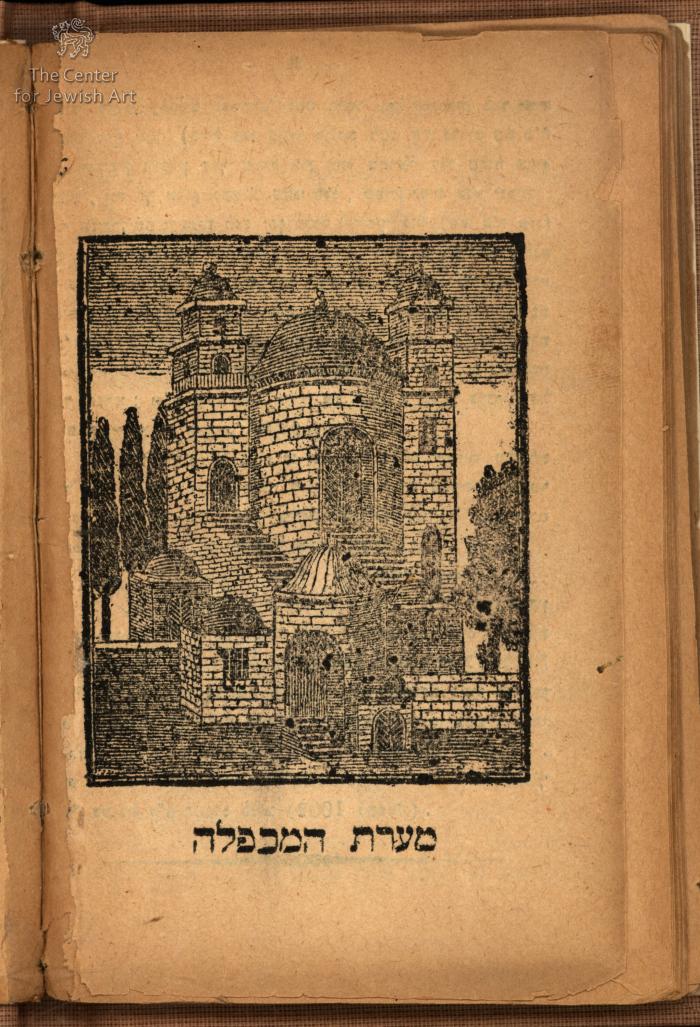Obj. ID: 37904 Netivot Tzion ve-Yerushalayim by Avraham Moshe Lunz, Jerusalem, 1876

sub-set tree:
This text was prepared by William Gross:
folding plate, illustration.
The printer, Israel Dov Frumkin, established his own press in 1874 and continued printing in Jerusalem for more than thirty years, after having worked in Bak's printing house since 1870. He was Bak's son-in-law.He was also the editor and printer for the newspaper "Havatzelet".
Abraham Moses Lunz (December 9, 1854–1918) (Hebrew: אברהם לונץ) was a Russian scholar and editor born at Kovno, Russia. At age 14 he came to Jerusalem.[1] Luncz, who suffered from early blindness, founded, in conjunction with Dr. Koisewski, an institution for the blind at Jerusalem.
In the exploration of the Holy Land, Luncz has rendered great services from the historical, geographical, and physical standpoints, through his guide-books for Palestine, his Palestine annuals, and his Jerusalem almanac:
Netibot Ẓiyyon we-Yerushalayim: Topography of Jerusalem and Its Surroundings (vol. i, 1876) Jerusalem, Jahrbuch zur Befצrderung einer Wissenschaftlich Genauen Kenntnis des Jetzigen und des Alten Palהstina (Hebrew and German, 6 vols., 1881–1903, Hebrew: ירושלים, שנתון לידיעת ארץ ישראל)Literarischer Palästina-Almanach (Hebrew; since 1894).
He owned a Hebrew printing press in the Ezrat Yisrael neighborhood, across the street from his own home in Even Yisrael.[1] From there he issued a number of works by Palestinian scholars, Estori Farḥi's Kaftor wa-Feraḥ and Josef Schwarz's Tebu'ot ha-Areẓ being the first works published. He also produced a travel guide to Israel.[1] As of 1904, he had in press a new edition of the Jerusalem Talmud with commentary and introduction.









